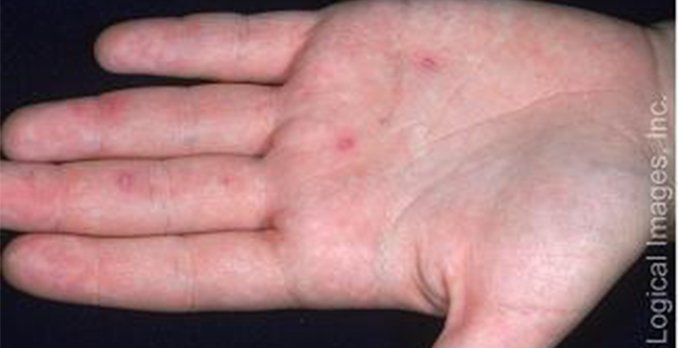
This patient has hand-foot-and-mouth disease, an acute, self-limited viral disease caused by Coxsackie viruses A and B and seen in children and adults. Incubation is short, lasting between three and six days; prodromes are generally absent.
Illness begins with fever up to 101°F, sore throat, sore mouth, cough, headache, malaise, diarrhea, and occasionally arthralgias. Small macules appear on the oropharynx, form vesicles 1 mm to 3 mm in size, and rapidly superficially ulcerate. Lesions develop a shallow yellow-gray base and a red areola. Lesions on extremities begin as erythematous macules and vesiculate to produce oval- or football-shaped 2 mm to 4 mm vesicles, surrounded with a red ring. Lesions appear most frequently on the palate, buccal areas, tongue, and gingiva as shallow ulcerations. Palms and soles are also frequent sites of involvement. The limbs may be affected, as well.
The disease is highly contagious and often spreads from child to child and then from child to adult. Epidemic outbreaks usually occur from June to October. Complications include interstitial pneumonia, pancarditis, meningoencephalitis, and abortion in pregnancy.
The differential diagnosis includes herpangina. However, herpangina does not exhibit vesicles on the palms, soles, digits, and other skin sites. Other diagnoses that cause vesicular lesions with fever include varicella, erythema multiforme minor, and herpes stomatitis. Aphthous ulcers are also within the differential and can present with a sore throat.
This is a self-limited viral infection requiring only symptomatic treatment.
Case presented by Logical Images, Inc.
[taq_review]
